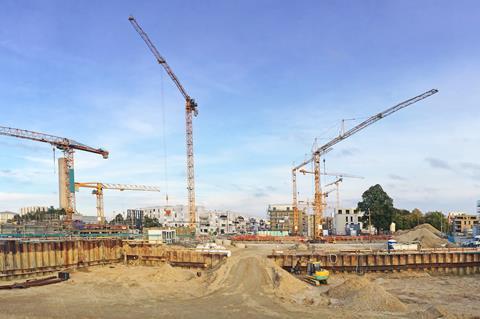With much talk about the challenges in securing construction materials, some may overlook the risk to labour costs looming around the corner. This comes as the pressure to design and create the next generation of high-quality, safe, London Plan-compliant zero carbon buildings mounts.

Material shortages and high cost inflation mean the cost of building new housing rose by an estimated 13.5% in the year to June. At a time of peak housing demand, shortages have affected the industry’s ability to keep up.
But material supply pressures are likely to be short-term issues as constraints unwind and supply catches up to demand. This is already evident for some materials, with costs for iron ore (an input to steel) peaking in July, and copper prices falling since May.
However, as construction recovers to full pipelines, labour pressures are due to mount, as structural issues such as an ageing workforce and low recruitment combine with the added constraints of Brexit, Covid and new regulations and skill demands on the industry.
Last year, an estimated 700,000 to 800,000 EU workers left London alone, amid immigration constraints and slowing demand. Recovering demand has yet to push up against this reduced labour supply, but we are starting to see some shortages in specialist skills. As recovery continues over the second half of the year, we expect the pressures on labour to mount.
On top of the reduced foreign labour pool are the domestic skills shortages implied by an ageing workforce and underinvestment in training and recruitment. While material shortages affect labour costs, the bigger concern is quality – without the right skills, the viability of some projects could be affected.

As the sophistication of the residential market has grown, so has the variety and level of skills needed in design and construction processes. Pressures to reduce embodied carbon, the need to meet new regulations such as the Building Safety Bill and increasingly specialised end products such as BTR add a need for new skills.
While technology may reduce the amount of labour required,
it will increase the range of skills and training needed. This means that designing and creating the next generation of buildings will require more skills at a time when less skilled labour is likely to be available.
In the short term, this highlights the need for robust cost management to (where possible) mitigate negative impact on the development. Understanding of the technologies involved, maximising use of off-site manufacturing, innovative technologies and up-to-date cost data can all strongly assist in this.
But to meet this challenge in the longer term, it is essential to encourage recruitment. Improving equality, diversity and inclusion in the industry will increase the labour pool, as well as the diversity of ideas and skills. Appealing to a tech-minded younger generation by emphasising innovation and technology will attract more labour and improve the productivity of existing and new labour.
Encouraging the government to reduce the friction of importing labour will allow foreign labour to continue to be used where domestic labour cannot meet demand.
The warning signs are clear, but a lag in demand gives time to prepare before the skills shortage truly hits – it is up to the industry to seize this opportunity.
Ciara Walker is construction economist at Core Five
![]()
RESI Convention takes place 8-9 September 2021, join Property Week and inspirational speakers as we deep dive into the key strategic issues that really matter post-crisis in ‘The Age of Responsibility’.





























No comments yet